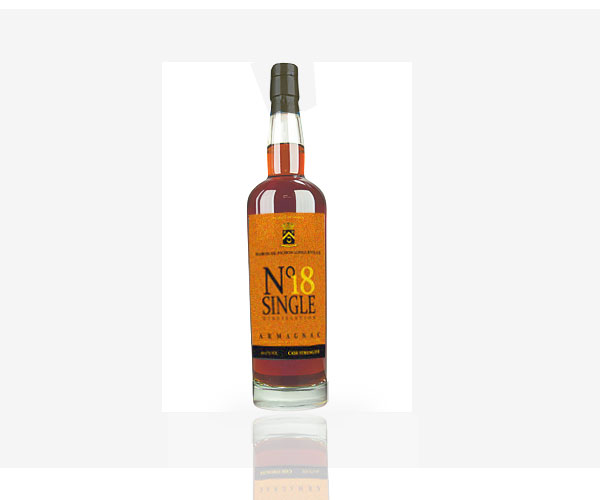With their history built in 1540, the château de Briat is a former hunting manor commissioned by Queen Jeanne d’albret for her son Henri de navarre, later Henri IV King of France. The King offered it to his fellow officer Arnaud de Mâtines who saved his life at the battle of Coutras 1587. The Briat estate, where armagnac has been produced for centuries, changed ownership several times until 1864, when it was taken over by Raoul de Pichon Longueville. due to their wine making expertise, the Pichon-Longueville family, who already owned the famous vineyard of the same name in Pauillac (Médoc), was able to improve upon the traditional process of wine making for armagnac. Thus the present “Château de Briat” label was created by Baron Raoul de Pichon-Longueville who is the maternal ancestor of the current owner Stéphane de Luze. De Luze and his cousin, Jean de Mareuil, are perpetuating the tradition in the family’s 5th generation, with the “Single” series being a fresh spin on that old tradition, combining the power of their cask strength blends with the modernity of the new packaging and style.
Region: Armagnac, France
Color: Dark amber
Aroma: Pain d’épices, brioche, caramel and truffles
Tasting Notes: Figs, dates, apricots along with roasted notes of tobacco, coffee and smoke
Food Pairings: Dessert canapés and chocolates
Grape Variety: Bacco, Folle Blanche and Colombard.
Alcohol Level: 44.6%
Distillation: Following distillation, the the white spirit ages in 400-liter new-oak coopered primarily from the forest of Limousin. Once the spirit and the wood have harmonized, generally after 18-24 months, the brandy is transferred to older barrels for slower maturation
Notes/Facts: De Luze grows 6.5 acres each of Baco, Folle Blanche, and Colombard—the same proportion used by his parents, guaranteeing consistency across the generations. Unusual among the Armagnaçais, he doesn’t reduce his brandies with water.
Region: Armagnac, France
Color: Yellowish Green
Aroma: Citrus, Peaches and Exotic Fruits
Tasting Notes: Spices and aromatic plants. The acidity is very marked with notes of bitter orange and raw walnuts.
Food Pairings: Reserve for cocktail based recipes.
Grape Variety: Bacco, Folle Blanche and Colombard.
Alcohol Level: 48%
Distillation: Unlike many other armagnac producers, Briat is a firm believer in keeping yields low and is not opposed to cutting fruit to give a final harvest of 60 hl/ha.
Notes/Facts: Our collection of armagnacs from the modern cask-strength Single Distillation collection, each age representing a deeper and more complex look into the development, from the 4yr series to the 18yr series.

Region: Armagnac, France
Color: Tawny yellow
Aroma: Acacia blossom, Rhubarb and notes of curry
Tasting Notes: Powerful with notes of ginger and jasmine, the alcohol is well integrated with silky tannins and a final deep and pronounced herbal finish.
Food Pairings: White chocolate tart and raspberries.
Grape Variety: Bacco, Folle Blanche and Colombard.
Alcohol Level: 46%
Distillation: Distillation is carried out with a seven copper plate still which is still wood fired and built in late 1890’s.
Notes/Facts: Our collection of armagnacs from the modern cask-strength Single Distillation collection, each age representing a deeper and more complex look into the development, from the 4yr series to the 18yr series.

Region: Armagnac, France
Color: Amber and Orange
Aroma: Green apple, Magnolia and toasted oak
Tasting Notes: Rancio, dried fruits, almonds and spices (pepper, curry) that are supported by a refreshing salinity.
Food Pairings: Dessert canapés and chocolates
Grape Variety: Bacco, Folle Blanche and Colombard.
Alcohol Level: 45.4%
Distillation: Following distillation, the the white spirit ages in 400-liter new-oak coopered primarily from the forest of Limousin. Once the spirit and the wood have harmonized, generally after 18-24 months, the brandy is transferred to older barrels for slower maturation
Notes/Facts: De Luze grows 6.5 acres each of Baco, Folle Blanche, and Colombard—the same proportion used by his parents, guaranteeing consistency across the generations. Unusual among the Armagnaçais, he doesn’t reduce his brandies with water.


